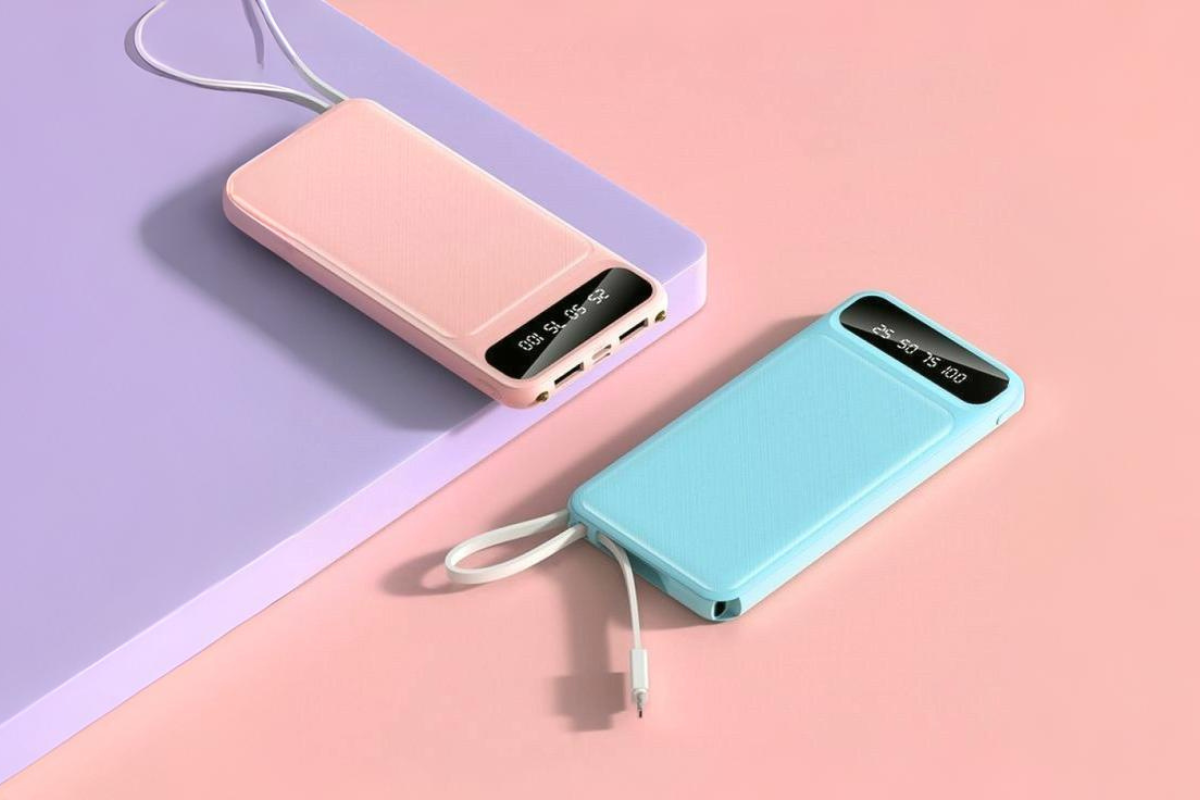In today’s digital world, where we rely on smartphones, smartwatches, earbuds, and other gadgets throughout the day, a power bank becomes an essential item, especially when traveling or away from a charging point for extended periods. With so many choices available, how can you select the one that best suits your needs?
Here are 7 key factors to help you choose the perfect power bank for your daily use.
➤ Voltage Output—Is It Compatible with Your Device?
Not every power bank is suitable for every device. Your phone or tablet requires a specific voltage to charge effectively—most smartphones use 5V, while some newer devices may need 9V or more (especially with fast charging).
If your power bank delivers less voltage, your device may charge slowly or not at all. If it delivers too much, it could harm your battery.
Pro Tip: Check the voltage rating on your current charger and match it with the power bank before purchasing.
➤ Battery Capacity—How Many Charges Can It Give?
Battery capacity is shown in mAh (milliampere-hour). The higher the number, the more power the power bank can store.
A good rule is to buy a power bank with at least double the capacity of your phone’s battery.
1. If your phone has a 4,000 mAh battery, choose a 10,000 mAh or 20,000 mAh power bank.
2. Want to charge two devices or go a few days without recharging your power bank? → Go higher!
Keep in mind that real-world charging is usually about 60-70% efficient due to energy loss, so always aim higher than your phone’s capacity.
➤ Safety Features—Protect Your Device and Yourself.
Low-quality power banks can overheat, overcharge your phone, or cause short circuits. It’s not only harmful to your device but could also be risky for you.
Look for safety features like
1. Overcharge and over-discharge protection
2. Short circuit protection
3. Surge protection
4. Auto power-off when charging is complete
Extra Tip: In India, choose power banks that have a BIS certification for better safety. It’s a mark of safety and compliance.
➤ Battery Cell Type—What’s Inside Matters.
There are two main battery types used in power banks:
1. Lithium–Ion (Li–ion): Lighter, cost-effective, commonly used
2. Lithium–Polymer (Li–Po): More stable, safer, and better performance, but slightly more expensive
Both are good, but avoid non-branded batteries or very cheap power banks—they may use recycled or low-grade cells, which can leak, swell, or even explode.
➤ Ports—Can It Charge Multiple Devices?
Before buying, check:
1. How many ports does it have? One? Two? More?
2. Are the ports USB-A or USB-C?
3. Does it support fast charging or PD (Power Delivery)?
If you carry a phone, wireless earbuds, and a smartwatch, choose a power bank with multiple outputs so you can charge all at once.
Also, check the input port—if it supports USB-C charging, the power bank itself will recharge faster.
➤ Build Quality—Will It Last?
Power banks are carried in bags, dropped on the floor, and exposed to heat or cold. So, build quality matters!
What to look for:
1. Strong outer casing (ABS plastic or aluminum)
2. Anti-slip surface
3. Dust and water resistance, if available
4. Compact and lightweight design for portability
Keep in mind that a low-quality build can cause battery issues, safety problems, or make the power bank wear out faster.
➤ Power Indicator—Know the Battery Level.
This small feature makes a big difference. A power indicator helps you track how much battery is left in the power bank.
There are two common types:
1. LED lights (e.g., 4 dots = 100%, 3 dots = 75%)
2. Digital screen showing percentage
A power indicator also prevents you from overcharging the power bank or being surprised when it runs out during travel.
➤ Bonus Buying Tips:
Brand matters: Go for trusted names like Anker, Mi, Realme, Ambrane, or boAt.
Warranty: A minimum 6–12 months warranty is ideal.
Weight: Larger capacity power banks are heavier—make sure it suits your travel needs.
Reviews: Always read customer feedback before buying online.
➤ Final Thoughts: Buying a power bank is more than picking the biggest battery. It’s about balancing capacity, compatibility, safety, build, and convenience.
By keeping these 7 important tips in mind, you can make a smart choice that fits your lifestyle, whether you’re a student, traveler, or just someone who always needs backup power.

Read Time:3 Minute, 43 Second


